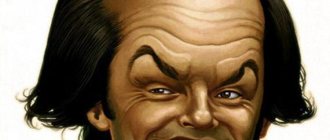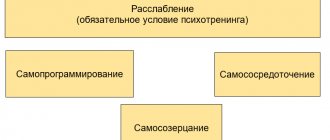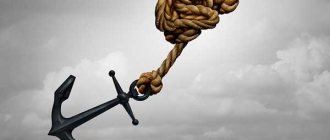Cross discussion
This method is similar to the previous one in that it involves searching for answers to questions based on a read fragment of a work. Students work in pairs with opposing opinions.
The first pair expresses a version and gives arguments in its favor, the second pair voices counterarguments and substantiates them. The task of technology is to work through the maximum number of versions, express different points of view and look at the situation from different angles.
During the discussion, students can move from one pair to another if their opinion has changed.
Useful materials
Here is a small selection of books on the topic:
- Tom Chatfield “Critical Thinking. Analyze, doubt, form your opinion”
- Robert Burton “Mind VS Brain. Conversation in different languages”
- Nikita Nepryakhin, Taras Pashchenko “Critical Thinking”
- Asya Kazantseva “Someone is wrong on the Internet! Scientific research on controversial issues”
- Ben Goldacre “Hoaxing Science”
- Stella Cottrell “The art of thinking and success in school, career, life”
- Darell Huff “How to Lie with Statistics”
You can find even more publications in our large selection of books on critical thinking. I also invite you to look at the selection of the best books about thinking, with the help of which you will learn to think outside the box and effectively.
Courses and trainings:
- Critical Thinking – 4brain
- Critical thinking – Wikium
- Course on critical thinking at work and in business – Yandex Workshop
More training programs can be found in the article about courses on developing critical thinking.
Insert
The Insert or conditional technique is usually used during the call phase. The teacher invites students to make notes with a pencil while reading the text.
The following symbols are marked:
- new knowledge;
- familiar things;
- information that contradicts the student’s understanding;
- points on which the student wants to deepen knowledge.
Readers then create a four-column table. The column name is a symbol for the text. In each column you need to briefly write down information from the text, then re-read what you wrote and add new thoughts and doubts.
The table is a visualization of the path from old to new knowledge. This technique helps to systematize the thought process, correctly classify information, highlighting new information from it and remembering it more easily.
Sinkwine
Cinquain translated from French means five lines. Compiling it is an effective mental exercise. It develops the skills of concise summarizing after comprehending the material covered.
The task of the practitioners is to write 5 lines:
- One noun that states the topic.
- Two adjectives that clarify the topic.
- Three verbs describing actions on the topic.
- A short phrase that contains the main idea.
- A summary that has an unexpected twist, the user’s attitude to the topic, and a fresh interpretation of it.
Theory and practice require teachers and students to persevere, adequately perceive the opinions of others, and be willing to admit their own mistakes, draw conclusions and correct them. Without this there will be no progress.
Concept
Critical thinking is one of the types of thinking that I discussed in a separate article. Let's see what definition Wikipedia gives to this concept.
Critical thinking is a system of judgment that helps analyze things and events, formulate valid conclusions and assessments, and then apply the results to situations and problems.
To think critically means to perceive information rationally, clearly and impartially, and to always look for evidence of its truthfulness and reliability. In simple terms, this is a thought process when you don’t just accept information on faith, but question it, try to check for accuracy, know how to find inaccuracies and weed them out, separate facts from their interpretations, etc.
According to some scientists, it is the transition of society to a critical level of thinking that is a prerequisite for the beginning of civilizational development.
More than 100 cool lessons, tests and exercises for brain development
Start developing
People first started talking about critical thinking at the end of the 19th century. The term itself was coined by philosopher John Dewey. But only at the turn of the 20th and 21st centuries. The issue began to be explored in more detail. So in 1995, Richard Paul identified the classification and tasks of critical thinking.
Some psychologists today are inclined to believe that this type of thinking is a mental activity that allows you to control your decisions and actions, which increases the likelihood of getting the desired result. A critically thinking person, through logical conclusions, can draw conclusions, accept any judgment, reject or temporarily postpone its consideration.
Carousel
The carousel is a technique for group work; in critical thinking technology it is used to work through open-ended questions. Before the discussion, the teacher formulates problematic questions that require multiple answers on separate sheets of paper. The number of questions must correspond to the number of groups.
On command, the teachers pass sheets of questions clockwise to each group member - like a carousel. The purpose of the technique is to jointly find an answer without duplicating previously voiced versions.
Then the teacher posts the groups’ answers on the board and announces a vote. Students vote for the answer that seems most accurate to them.
Why is it needed?
The skill of rational reasoning is an integral part of life.
- Education
Critical thinking helps schoolchildren and students select sources for educational work, structure and summarize the data obtained, identify cause-and-effect relationships, competently defend their point of view and find inaccuracies in other people's arguments. It also allows you to reason competently in those disciplines in which there is no single correct answer. For example, in philosophy, history, social science, sociology, pedagogy, etc.
- Labor activity
A professional must be able not only to perform routine work according to standard schemes, but also to make unconventional decisions, look for new ideas and approaches to solving problems. Critical thinking is one of the most significant traits of any leader. It allows you to see the situation from different angles and make decisions even in the face of incomplete or unreliable information.
- Everyday life
A critical look at everything that happens around us helps to consciously solve issues in any area of our lives, be it personal relationships, health or everyday tasks. Rationality makes it possible to filter any data, recognize lies, quickly and intelligently resolve conflicts, choose the best course of action, avoid serious mistakes and quickly find methods to correct them.
Kinds
In psychology, there are two types of critical thinking:
- Weak. People of this type, as a rule, have a fairly high level of education and qualifications, but are pseudo-intellectuals with selfish motives. They believe that they are better informed on many issues than others; they are little concerned about the ethical side of actions and decisions. Weak critical thinking dictates looking for benefits everywhere. Such people constantly think: “What will I get in return, is it beneficial for me?”
- Strong. It is possessed by people who seek a logical essence without egocentric and social overtones. They will prefer truth to profit. Their intentions are always positive, and decisions are made based on the overall objective benefit, and not personal gain.
How do you know if you have critical thinking and to what extent? Tests will help determine this.
Reading with pauses
This technique involves measured reading of the text. The teacher reads part of the story aloud, pauses and asks a problematic question to the audience. Questions can be about associations, feelings, further development of the storyline, the ending of the story, but each of them should encourage the group to search for an answer and discuss.
Discussions are held in pauses, after which the teacher reads the next part of the text and breaks again.







